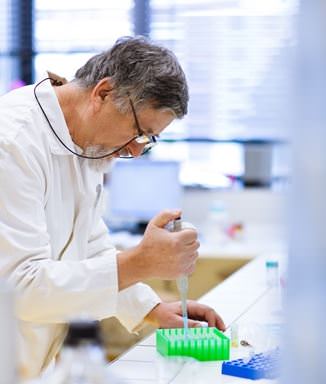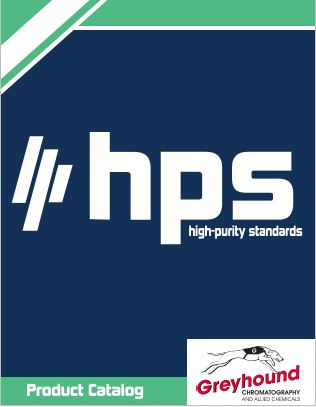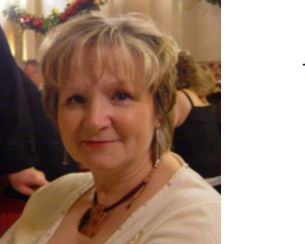New Developments in Chemical Spectral Analysis
While the chemicals in your laboratory may be clearly labeled and easily distinguished from one another, it's significantly more difficult to analyze a substance and determine exactly what chemicals constitute the mixture. Researchers from the Institute of Physical Chemistry of the Polish Academy of Sciences, or IPC PAS, in Warsaw, Poland have developed a new method for finding which chemicals and compounds are in a given substance.
Rethinking spectral analysis
The researchers developed a new algorithm to improve the effectiveness of spectral analysis, according to IPC PAS. Chemical analysis using light has been promising, but unreliable. By looking at the way that light is scattered by a substance, as one does with spectral analysis, you can examine the unique way in which light interacts with individual molecules or atoms. The radiation they give off or absorb and other data that can be determined from light interaction can help people determine the exact chemical compounds in a mixture.
However, this type of chemical analysis has not always been reliable in the past. In some cases it would fail to identify every compound, or worse, give off false positives, indicating that a compound was in the substance that was not. Additionally some elements or compounds would have similar markers that could lead to confusion and overlap results.
The IPC PAS researchers compare the issues of spectral analysis to talking at a concert, where the plethora of sounds can interfere with communication. To avoid this inevitable confusion, the scientists shifted their focus from the intensity of spectral analysis results, turning instead to looking at the shapes and features that make each signature unique, like facial recognition software, Tomasz Rolinski from the IPC PAS explained.
"When examining the structure of the light that is registered – that is, in the course of spectral analysis – the whole trick is to pick out only the most important elements characteristic of a given substance from the spectrum of the mixture," Rolinski said in a statement.
"This approach is somewhat similar to the automatic face detection method used, for example, in security systems at airports. This does not involve a comparison of the appearance of every detail of the face, but a search for similarities in simple relationships, such as eye spacing, the position of the mouth or the end of the nose. Then it no longer matters if the wanted person is wearing a hat or not, or whether he has a suntan or has shaved off his mustache."
By examining the shape and relative position of spectral lines, the researchers were able to perform better than traditional spectral analysis when testing 20 substances. In addition to identifying the substances regularly, the test found that the new approach produces zero false positive matches for substances not present in the mixture.
Potential uses for this new technology
NPR explained that one of the only downsides of the hugely success food production system in the U.S. is that pesticides can travel from farms into nearby water ways, affecting the ecosystem and polluting the rivers, streams and lakes.
More effective tests, like the light spectral method developed by IPC PAS may be able to play a significant role in addressing these concerns. By testing water, soil or other natural substances, everyone from farmers to the community will have a better idea about what chemicals are contaminating the land and how the issue can be addressed. For example, NPR pointed to an example where Missouri's Clarence Cannon Wholesale Water Commission was treating water with powder activated carbon to remove atrazine (1) from the water supply.
(1) Atrazine is also known as 2-Chloro-4-ethylamino-6-isopropylamino-s-triazine; Aatrex®; Gesaprim®; Atratol®;
The first step to addressing a problem like pollution or contamination is to find the cause of the problem and understand what substances you're working with. This will allow for the best treatment and prevention methods.
CONTACT US
Tel: +44 (0) 151 649 4000
Email: marketing@greyhoundchrom.com
FOLLOW US
YOU MAY ALSO BE INTERESTED IN OUR NEWSLETTER
About the Author
Susan Massie, Sales & Marketing Director, Greyhound Chromatography and Allied Chemicals Email: sue@greyhoundchrom.com
Susan Massie is the Sales & Marketing Director for Greyhound Chromatography and Allied Chemicals, affectionately known as 'Greyhound' in our scientific community. Greyhound was founded by Susan's husband Paul Massie more than 40 years ago, Susan hasn't been in the business for all of that time but has been involved with Greyhound for over 17 years. Greyhound continues to grow, expanding into new markets and taking on the challenges of our ever changing environment. It's heartwarming to witness the world waking up to the fact that we are damaging our planet on a daily basis. Every action we take has a direct effect on our planet and the world we leave behind for future generations. Susan is passionate about climate change and is happy to work in an industry that can have a direct effect on reducing the impact of our actions on the environment. All of the team at Greyhound take our responsibilities very seriously, the products that we supply are used by the world's leading scientists and chemists as they endeavour to monitor and repair the environment. All is not lost, if we all take responsibility for our actions, from reducing our waste and reusing or recycling our material collateral we can make a difference. The internet is full of useful advice and guidance, Susan is proud to contribute to that wealth of knowledge whenever she can.
Greyhound prides itself on personal service which provides prompt, efficient, cost-effective, safe delivery of all products. Greyhound provides technical advice and distribution of Certified Reference Standards and Materials, Laboratory Consumables, Solvents and Reagents across all scientific disciplines. Greyhound Chromatography offers over 1 Million products from its UK warehouse. The team at Greyhound are proud to support the work of the world's leading scientists and chemists as they challenge the abuse of our planet and try to make a difference to the world we leave behind for our ancestors.
You can view Susan's Linked In Profile here https://www.linkedin.com/in/susan-massie-79ab4121/


















